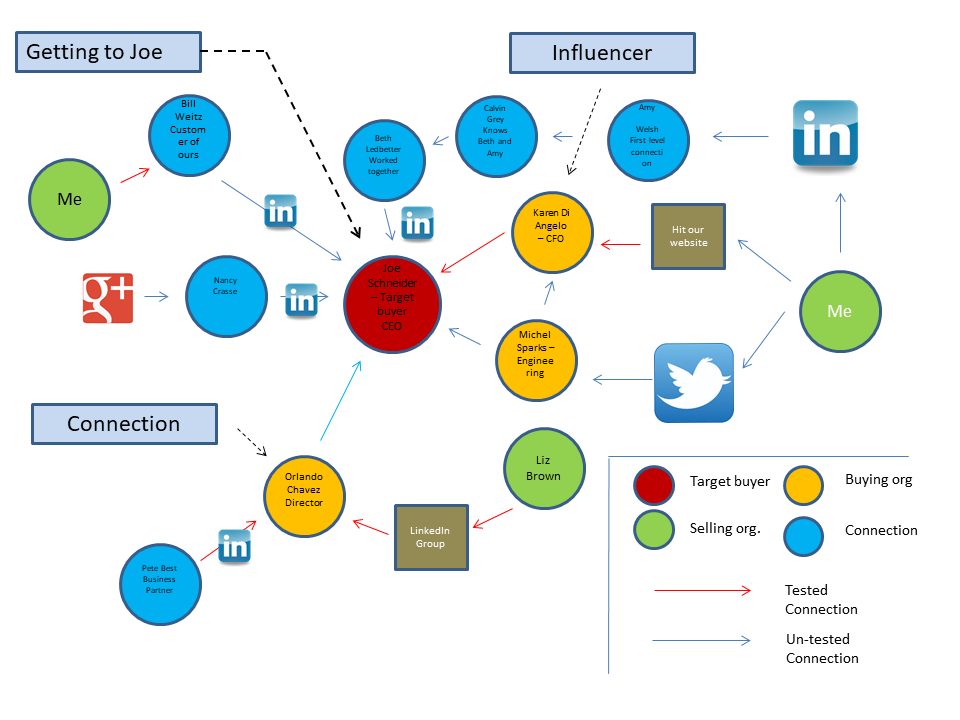A few decades back (yes, I’ve been in this business a while) the sales execs at SAP (where I worked) talked about their “golf course lead” – which usually arrived on Monday morning. Way before the days of social media and internet marketing, one of the top tactics for filling sales funnel was the cold call. The sales reps would have their assigned territories, they would hit the phones, generate leads and hopefully make or exceed quota.
But every now and then an opportunity would crop up out of the blue, and it was usually during the first day or two of the week. The prospect would call and say something along the lines of, “I was playing golf with my buddy this weekend, and he told me that his company has just implemented SAP – can I get a demo?” You’ve got to remember, this was in the days before Y2K when many organizations ran a hodge-podge of business systems, and integrated ERP solutions were the next new thing.
These leads often proved to be much better sales opportunities than those unearthed by the dialing-for-dollars method. Which goes to show, the influence of trusted friend, colleague or in this case a golfing buddy can be pretty strong.
Hatchimals are furry little toys that became the rage of last year’s holiday season. If you thought that $80 retail (and a whole lot more on eBay) was a lot to pay for a furry creature that bursts out of a plastic shell – chances are your kids didn’t. As a parent, I certainly know the influence a child can have on your purchasing decisions.
In both these examples, the original information on the product did not come from the selling organization but from a personal connection. This is where sociography comes in.
There are conflicting definitions of sociography, in many cases confusing it with psychographics – which is focused more on the individual’s needs, challenges and pain points (think of Maslow’s hierarchy of needs and you get an idea of psychographics).
Sociograhy is concerned with the influence that social groups have on an individual – or how a person’s thoughts and preferences are influenced by business connections, colleagues, friends or even golfing buddies. In a nutshell, those who are connected with your target buyers may have much more influence on their purchasing decisions than you. So, if you can get those who are connected to your target buyers to rave about your goods, the chance of winning your buyers’ attention is much better than with an unsolicited email, phone call or social media post.
And it not just a little better – your buyers’ connections are an order of magnitude better at engaging. One survey found that using existing customers to promote products and services to their personal connections was more effective than any other selling channel by a factor of 5:1[1]
Understanding how the social group impacts buyer decisions, or discovering which connections are more influential than others, can take you into the realm of some pretty elaborate statistical modeling and analytics. That’s fine, if you’re up to it, but it’s not necessary for the average marketer.
Readily-available social media data can give insights into social influence without hiring a PhD in Applied Mathematics. Delving into LinkedIn and with a bit a research and testing you can start building socio-graphs that show how to best influence your target buyers.
Here’s an example of a socio-graph. It’s pretty simple. Here, we built a series of paths to our target buyer (Joe Schneider). The goal is getting to Joe – but we do it through people who are connected and can influence him – rather than reaching out directly. The company we built this socio-graph for, we’ll call “the selling organization”. Let’s walk through this example. (Names have been changed to protect our client.)

The blue arrows represent connections we know about and the red arrows are tested influencers. So for example, a month or two back Karen Di Angelo hit the selling organization’s website and downloaded a PDF. When the selling organization followed up with Karen she stated that she found the PDF interesting and had passed it on to Joe. Karen is now an influencer – not just a connection.
Liz Brown – who works for the selling organization – is a member of a LinkedIn group of which Orlando Chavez is a member. Orlando is connected to Joe on LinkedIn and works in the same company as Joe. Equipped with this socio-graph, we can now start mapping paths to Joe and designing content to engage and interest Karen and Orlando – with an eye to getting to Joe Schneider.
There’s nothing new here. Influencer marketing has been around for a long time. It’s the practice of “… getting others to share your story, generate interest and make your case”.[2] Influencer marketing often (but not always) includes fee-based agreements with bloggers, celebrities, industry luminaries and other prominent individuals to discuss and share stories about a company’s product or services. These are high-level influencers with a large following and a lot of social media punch – a nod from Guy Kawasaki, for example, can mean a lot to some people.
But that’s just one part of the story. Influencers also include your target buyer’s team members, others in the same company, business partners, and Twitter, Facebook and LinkedIn connections. These influencers don’t charge a fee to share content and will do so as long as the content is relevant, interesting and appropriate.
Don’t discount the influence of the less feted “little guys” who don’t have hundreds or thousands of followers. There’s a little known paradox about sharing content with those who have few connections –they’re more likely to share it since they’re not overwhelmed with content like the luminaries. The little guys can often spread news faster than the lauded influences. Give these guys relevant content and you’ve given them social currency that they’re keen to spend. And guess what, the little guys are connected to other little guys who are also willing to share relevant content[3]. And so it goes… Liz is connected to Orlando, who is connected to Joe.
Understanding how these connections influence and impact your target buyers is at the heart of sociography – and as mentioned, it can be as complicated as advanced statistical modeling or as simple as building a socio-graph and a bit of intelligent elbow grease and trial and error.
Sociography and influencer heat maps can play a key role in account-based marketing programs or ABM. ABM is a selling and marketing approach that treats an account, or handful of key accounts, as a stand-alone market. In ABM, marketing activities target and engage the account (or accounts) through multiple channels and often with multiple content offers. Building socio-graphs, understanding the influencer channels and sharing great content with influencers adds a lot of heft to any ABM program.
But, advocates of ABM don’t seem to pay much attention to sociography. How to engage the target account and get to the desired buyers is often vague. For example, here’s a recommended ABM outline from HubSpot:
- Identify your target
- Research your accounts
- Create content
- Choose channels
- Run the campaign[4]
And from Marketo:
- Target and manage accounts
- Engage target accounts across channels
- Measure impact[5]
One book on ABM suggests “focusing on a single point of contact … (then) further expand the account by adding more contacts”[6]. Another source talks about simply building a list of role-based contacts[7]. While none of this is wrong, adding sociography to an ABM program is bound to make it more effective.
The same goes for SaaS or cloud-based solutions where the initial deal may be small (a division or a departmental purchase), and the account goal is to “land and expand”. The initial sale (and in some cases a free version) is the landing zone – the real money comes from up-selling and cross-selling. Spending time building socio-graphs and then seeding and testing the influencer channels should be part of all SaaS and cloud-based programs. Using influencer channels and getting existing customers to sell for you can be incredibly effective. Deloitte found that new customers who are referred by old customers have a 37% higher retention rate that cold-sell deals[8].
Mass marketing is dead. The internet killed it. Today there is no longer a mass audience to broadcast to, but multiple channels and multiple influences that impact purchasing decisions. The tribe, the group and the community are now the real influencers. Social media facilitates the links and connections that make these social groups work – “people are now coming together based on communities of affinity”[9] rather than mass purchasers. Sociography is way of understanding these social influences and capitalizing on them to get your message to the right person.
Keen to learn more – or join the discussion? Contact us.
[1] AT&T survey cited by Tom Philips https://www.youtube.com/watch?v=QcQycEsZU9M&t=25s
[2] Attributed to Arbath Albee https://issuu.com/skidream/docs/new
[3] Jonah Berger “How Ideas Spread”
[4] https://blog.hubspot.com/marketing/account-based-marketing-guide
[5] Marketo “Three Essential Components of an ABM Solution’
[6] Account-Based Marketing for Dummies
[7] https://blog.topohq.com/account-based-marketing-11-tactics-to-drive-your-abm-process/
[8] https://www.slideshare.net/brandonmurphy/brand-advocacy-and-social-media-2009-gma-conference
[9] https://www.searchenginejournal.com/the-social-graph-sociographics-how-to-use-friends-to-influence-people/63055/

Great perspective, keen to learn more